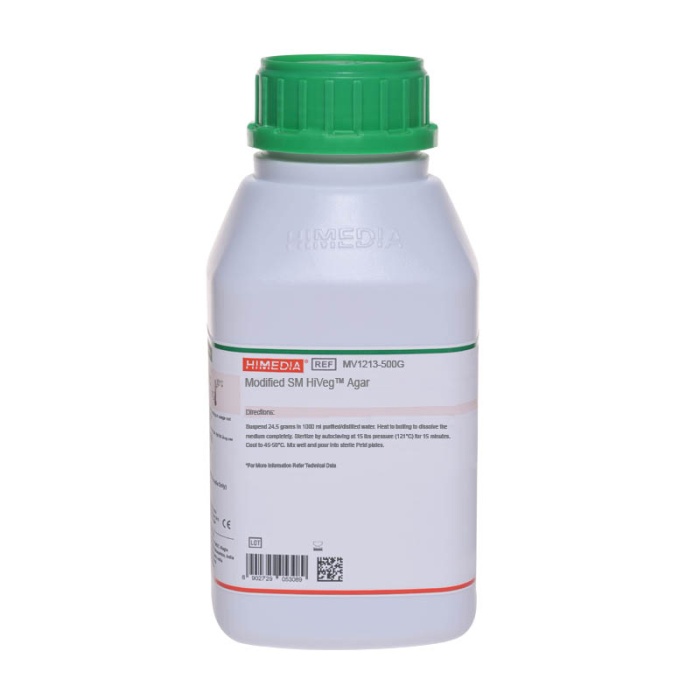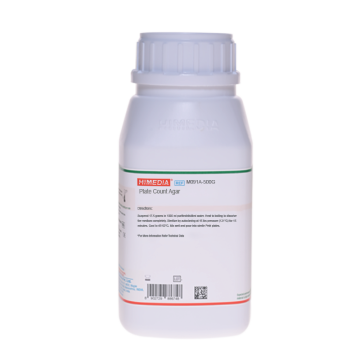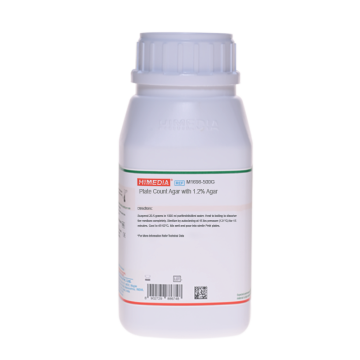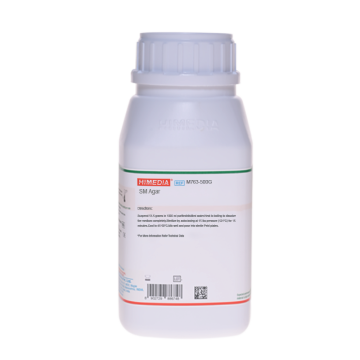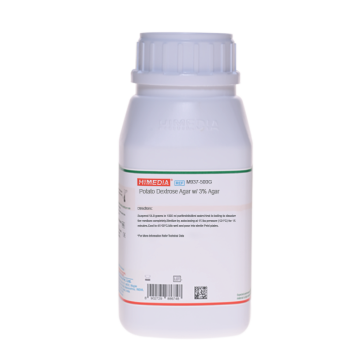 Your enquiry has been submitted
Your enquiry has been submitted
Modified SM Agar
Intended Use
Modified SM Agar is recommended for cultivation and enumeration of microorganisms encountered in dairy industry.
Composition**
| Ingredients | Gms/Litre |
|---|---|
| Tryptone | 5.000 |
| Yeast extract | 2.500 |
| Glucose monohydrate | 1.000 |
| SM powder | 1.000 |
| Agar | 15.000 |
Final pH (at 25°C): 7.0±0.2
**Formula adjusted, standardized to suit performance parameters
Directions
Suspend 24.50 grams (the equivalent weight of dehydrated medium per litre) in 1000 ml distilled water. Heat to boiling to dissolve the medium completely. Sterilize by autoclaving at 15 lbs pressure (121°C) for 15 minutes. Cool to 45-50°C. Mix well and pour into sterile Petri plates.
Principle And Interpretation
Modified SM Agar is formulated as per APHA (1) for cultivation and enumeration of microorganisms encountered in dairy industry. It is also recommended by ISO Committee under the specifications ISO 6610:1992 (2) and ISO 6730:1992 (3). The medium is rich in nutrients to facilitate luxuriant growth of organisms.
Tryptone and yeast extract provides nitrogenous and carbonaceous compounds, long chain aminoacids, vitamins and other essential nutrients. Glucose monohydrate is the source fermentable carbohydrate.
The inoculated agar plates are incubated at 30°C to enumerate organisms from milk and milk products. Seeded plates are incubated at 6.5°C to isolate and enumerate psychrotrophic microorganisms from milk. Psychrotrophic organisms can grow at temperature below 7°C, although their optimal growth temperature may be in the range of 20-30°C (4).
Type of specimen
Dairy samples
Specimen Collection and Handling:
For Dairy samples, follow appropriate techniques for sample collection and processing as per guidelines (5).
After use, contaminated materials must be sterilized by autoclaving before discarding.
Warning and Precautions :
In Vitro diagnostic Use only. Read the label before opening the container. Wear protective gloves/protective clothing/eye protection/ face protection. Follow good microbiological lab practices while handling specimens and culture. Standard precautions as per established guidelines should be followed while handling clincal specimens. Saftey guidelines may be referred in individual safety data sheets.
Limitations :
Due to variable nutritional requirements, some strains show poor growth on this medium.
Performance and Evaluation
Performance of the medium is expected when used as per the direction on the label within the expiry period when stored at recommended temperature.
Quality Control
Appearance
Cream to yellow homogeneous free flowing powder
Gelling
Firm, comparable with 1.5% Agar gel
Colour and Clarity of prepared medium
Yellow coloured clear to slightly opalescent gel forms in Petri plates
Reaction
Reaction of 2.45% w/v aqueous solution at 25°C. pH: 7.0±0.2
pH
6.80-7.20
Cultural Response
M1213: Cultural characteristics observed after an incubation for 24-48 hours at 30°C & 6.5°C
| Organism | Inoculum (CFU) | Growth (30°C) | Recovery (30°C) | Growth (6.5°C) | Recovery (6.5°C) |
|---|---|---|---|---|---|
| Bacillus subtilis ATCC 6633 (00003*) | 50-100 | luxuriant | >=70% | luxuriant | >=70% |
| Clostridium perfringens ATCC 12924 | 50-100 | luxuriant | >=70% | luxuriant | >=70% |
| Escherichia coli ATCC 25922 (00013*) | 50-100 | luxuriant | >=70% | luxuriant | >=70% |
| Lactobacillus casei ATCC 9595 | 50-100 | luxuriant | >=70% | inhibited | 0% |
| Pseudomonas aeruginosa ATCC 27853 (00025*) | 50-100 | luxuriant | >=70% | inhibited | 0% |
| Staphylococcus aureus ATCC 25923 (00034*) | 50-100 | luxuriant | >=70% | inhibited | 0% |
Key: *Corresponding WDCM numbers.
Storage and Shelf Life
Store between 10-30°C in a tightly closed container and the prepared medium at 2-8°C. Use before expiry date on the label. On opening, product should be properly stored dry, after tightly capping the bottle inorder to prevent lump formation due to the hygroscopic nature of the product. Improper storage of the product may lead to lump formation. Store in dry ventilated area protected from extremes of temperature and sources of ignition Seal the container tightly after use. Use before expiry date on the label.
Product performance is best if used within stated expiry period.
Disposal
User must ensure safe disposal by autoclaving and/or incineration of used or unusable preparations of this product. Follow established laboratory procedures in disposing of infectious materials and material that comes into contact with clinical sample must be decontaminated and disposed of in accordance with current laboratory techniques (6,7).
Reference
- Vanderzant C. and Splittstoesser D. F., (Eds.), 1992, Compendium of Methods for the Microbiological Examination of Foods, 3rd Ed, APHA, Washington, D.C.
- International Organization for Standardization (ISO), 1992, Draft, ISO/DIS 6610.
- International Organization for Standardization (ISO), 1992, Draft, ISO/DIS 6730.
- Marshall R. (Ed.), 1992, Standard Methods for the Examination of Dairy Products, 16th Ed., APHA, Washington, D.C.
- Wehr H. M. and Frank J. H., 2004, Standard Methods for the Microbiological Examination of Dairy Products, 17th Ed., APHA Inc., Washington, D.C.
- Isenberg, H.D. Clinical Microbiology Procedures Handbook. 2nd Edition.
- Jorgensen, J.H., Pfaller, M.A., Carroll, K.C., Funke, G., Landry, M.L., Richter, S.S and Warnock., D.W. (2015) Manual of Clinical Microbiology, 11th Edition. Vol. 1.
| Product Name | Modified SM Agar |
|---|---|
| SKU | M1213 |
| Product Type | Regular |
| Physical Form | Powder |
| Origin | Animal |
| Packaging type | HDPE |
| References | 1. Vanderzant C. and Splittstoesser D. F., (Eds.), 1992, Compendium of Methods for the Microbiological Examination ofFoods, 3rd Ed, APHA,Washington, D.C. |
| Customized Product Available | No |





